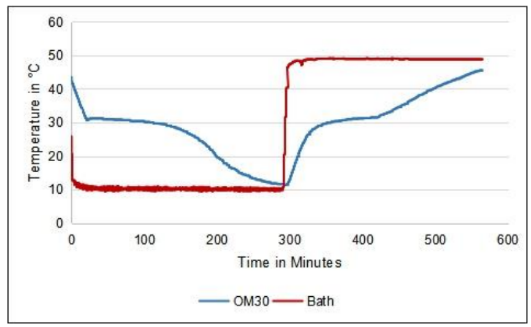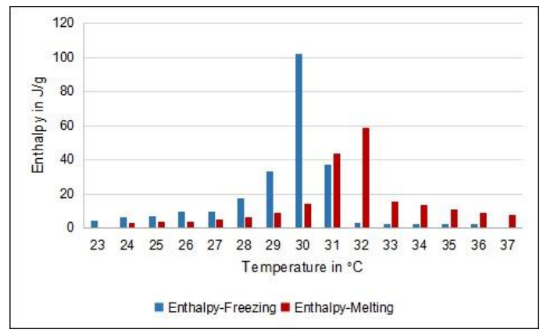Knowde Enhanced TDS
Identification & Functionality
- Industrial Additives Functions
- Technologies
Features & Benefits
- Labeling Claims
- Industrial Additives Features
Applications & Uses
- Applications
- Applicable Processes
Properties
- Appearance
- White waxy solid (at 25°C)
- Typical Properties
- Thermal Properties
- Note
* Determined by T-history.
** Nominal Valu[es. Actual values mentioned in test certificate.
| Value | Units | Test Method / Conditions | |
| Phase Transition Temperature (Melting at 40°C air bath) | 32 | °C | PLUSS® T-History |
| Phase Transition Temperature (Freezing at 20°C liquid bath) | 30 | °C | PLUSS® T-History |
| Density Liquid (at 45°C) | 878 | kg/m³ | ASTM D891-95 |
| Density Solid (at 25°C) | 906 | kg/m³ | ASTM D891-95 |
| Cycling Stability | 2000 | — | PLUSS® Internal |
| Flammability | Yes | — | — |
| Flash Point | 200 | °C | CCC |
| Value | Units | Test Method / Conditions | |
| Latent Heat Enthalpy (Melting at 27 to 37 °C) | 206 | kJ/kg | PLUSS® T-History |
| Latent Heat Enthalpy (Freezing at 33 to 23°C) | 230 | kJ/kg | PLUSS® T-History |
| Specific Heat (liquid at 45°C) | 2.68 | kJ/kgK | PLUSS® T-History |
| Specific Heat (solid at 25°C) | 2.6 | kJ/kgK | PLUSS® T-History |
| Thermal Conductivity (liquid at 35°C) | 0.123 | W/mK | KD2Pro |
| Thermal Conductivity (solid at 10°C) | 0.185 | W/mK | KD2Pro |
| Maximum Operating Temperature | 90 | °C | — |
Technical Details & Test Data
- Test DataPhase transition temperature range and stored thermal energy*
Phase transition temperature range and stored thermal energy*
 Temperature vs time curve
Temperature vs time curve
Enthalpy vs temperature curve